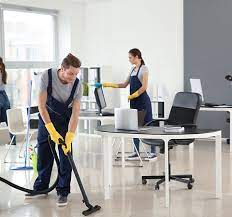Every business has its rhythm—some hum with the steady click of keyboards, others buzz with back-to-back meetings and foot traffic. But behind every productive workspace is one constant: cleanliness. A well-maintained office doesn’t just look good—it drives performance, lifts morale, and protects health. Still, many businesses overlook a crucial question: how often should you schedule Office Cleaning?
The answer isn’t one-size-fits-all. It depends on your industry, staff size, daily footfall, and workspace layout. Let’s break down what the right frequency looks like—and why getting it right matters more than you might think.
Why Regular Office Cleaning Affects More Than Just Appearances
Step into a freshly cleaned office, and there’s an instant shift. Desks feel more welcoming. The air smells cleaner. People move with purpose. That’s not just perception—it’s science.
A 2023 report by Safe Work Australia highlights the direct link between hygiene and employee wellbeing. Regular cleaning reduces exposure to germs, allergens, and pollutants—cutting down on sick days and lifting mental clarity.
It’s also a silent productivity booster. Employees in tidy spaces report higher satisfaction and focus. A dusty keyboard or a stained breakroom table might seem minor, but over time, these signs of neglect can drain morale.
Daily, Weekly, or Monthly? Your Office Cleaning Frequency Guide
Scheduling Office Cleaning is part strategy, part habit. Here’s a frequency breakdown that suits most professional spaces:
Daily Cleaning Tasks
Essential in high-traffic or shared environments. Includes:
- Emptying bins
- Wiping down desks and communal surfaces
- Sanitising kitchens and bathrooms
- Spot vacuuming and mopping
Open-plan offices, coworking hubs, and medical centres should always opt for daily cleaning. It keeps germs in check and helps maintain a polished front for clients and visitors.
Weekly Cleaning Tasks
For deeper upkeep, weekly routines target areas that don’t require daily attention:
- Dusting blinds, skirting boards, and monitors
- Cleaning interior windows
- Mopping hard floors thoroughly
- Wiping door handles, light switches, and air vents
Most standard offices can get by with a mix of daily touch-ups and weekly deep cleaning in less-used areas.
Monthly or Periodic Cleaning
Perfect for less visible zones and maintenance-level work:
- Carpet shampooing
- High dusting (ceiling fans, vents)
- Upholstery cleaning
- Exterior windows (if not exposed to extreme weather)
Larger buildings or prestige offices might even include quarterly maintenance plans to preserve long-term value.
Industry Spotlight: Offices with Higher Cleaning Needs
Not all workplaces are equal. Some need more attention than others.
1. Medical, Legal & Government Offices
These workplaces demand strict hygiene protocols, especially in shared spaces like waiting areas and kitchens. Office Cleaning here often includes sterilisation of surfaces and higher-frequency bathroom maintenance.
2. Creative Studios & Agencies
With flexible layouts and collaboration zones, these offices accumulate clutter fast. Weekly resets and structured cleaning routines help maintain order and aesthetic appeal.
3. Tech Startups & Shared Spaces
Frequent hotdesking and communal areas mean these spaces can become hygiene hotspots. Daily cleaning—especially of touchpoints—is non-negotiable.
Who Handles the Cleaning? In-House vs Professional Services
Some businesses assign cleaning duties to in-house staff or casual contractors. But consistency, compliance, and efficiency often come from professional cleaners.
Professionals use commercial-grade disinfectants, understand OH&S standards, and are trained in time-efficient techniques. They can work outside business hours to avoid disruption and scale services as needs evolve.
For example, when staff head back after a long weekend or public holiday, a full Office Cleaning refresh can reset the tone. Or after renovations or events, a one-off deep clean might be essential.
Signs It’s Time to Adjust Your Cleaning Schedule
Is your current routine keeping up with your office’s demands? Here’s what to watch for:
- Dust build-up on workstations within days
- Unpleasant smells near bins or restrooms
- Sticky or stained kitchen counters
- Increased staff sick leave
- Visitor complaints or negative first impressions
If these issues pop up between scheduled cleans, your frequency might be off. Consider increasing daily or weekly services, or introducing more targeted cleaning.
Clean Office, Clear Mind: The Case for Smarter Scheduling
Routine matters. So does flexibility. A great cleaning schedule adapts with your business—from peak seasons to team expansion.
Whether you manage a five-person suite or a 50-desk floor, the frequency of Office Cleaning will influence everything from staff retention to client trust.
Don’t wait for the dust to settle—set a routine that reflects your workplace’s standards and aspirations. For a streamlined, professional service that matches your pace, look to industry leaders in Office Cleaning.
Final Thoughts
There’s no single formula for how often to clean an office—but there is a right one for your space. Monitor your environment, ask your team for feedback, and align your cleaning routine with your business goals.
A clean office isn’t just a nice-to-have—it’s a competitive edge. Make sure you’re scheduling it like one.

